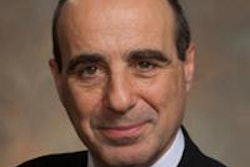
In a time of rapid healthcare change, there's both good news and bad news for breast imagers, according to a presentation given on April 9 at the Society of Breast Imaging (SBI) postgraduate course in Los Angeles.
The good news is that mammography has been on the scene since the early 1980s and breast imaging has a solid infrastructure and demonstrated success, according to presenter Dr. Michael Linver from X-Ray Associates of New Mexico. The bad news? Costs are rising and reimbursement is falling. And mammography coverage and reimbursement -- and therefore its long-term viability -- are subject to multiple spheres of influence, especially political ones, Linver said.
"Radiology services, including breast imaging and intervention, are under particular scrutiny," he said. "And mammography is the most heavily legislated medical test in the history of the world."
A changing paradigm
 Dr. Michael Linver.
Dr. Michael Linver.
How is the healthcare delivery model changing, and how does it affect breast imaging? A perfect storm of factors have contributed to the push toward healthcare reform, according to Linver, including growing costs, a large number of uninsured or underinsured Americans, decreasing numbers of primary care providers, and a limited body of comparative effectiveness research for most medical procedures. The Patient Protection and Affordable Care Act passed in 2010 is an attempt to break the "iron triangle" of cost, access, and quality, Linver said.
"Traditionally, it's been thought that one can't reduce cost without also reducing access and/or quality," he said. " 'Obamacare' is attempting to break this iron triangle."
How? On the cost side, by decreasing reimbursement, increasing taxes, and setting up healthcare delivery plans such as accountable care organizations (ACOs). On the access side, by changing healthcare insurance and assistance eligibility rules, and on the quality side, by promoting quality initiatives with penalties and incentives and focusing on evidence-based medicine.
In the midst of all this change, breast imaging centers can take action in specific ways, according to Linver. He outlined four for session attendees:
Shore up your practice. Become more efficient and patient-oriented; develop strategic planning for practice growth and stability.
Incorporate the principles of the "six A's." Hopefully, radiologists already practice the first three -- affability, availability, and ability, Linver said. But now there are three more:
- Affordability: Keep up with equipment needs through new relationships.
- Alignment: Establish new partnerships with hospitals, other groups, and ACOs.
- Accountability: Develop quality initiatives and work with referring physicians.
Help get useful new technologies reimbursed by the U.S. Centers for Medicare and Medicaid Services. "These technologies will only be reimbursed if we show proven value in quality and cost savings," Linver told session attendees. One avenue is to work with organizations such as the Patient-Centered Outcomes Research Institute, which is a $1.4 billion program Congress funded in 2010.
Get involved. Write or call members of Congress, support the American College of Radiology in its efforts to lobby Congress to effect change, and work with patients and women's groups. "[Patients] are our best allies," Linver said. "Congress will respond to their numbers, and does not consider them self-serving."
Now is not the time to be faint of heart, Linver concluded: Radiologists must use the right mix of defiance, determination, passion, and compassion to make the new paradigm work.
"We have a moral imperative to do the right thing for our patients," he said. "We have the ability to save their lives."




















